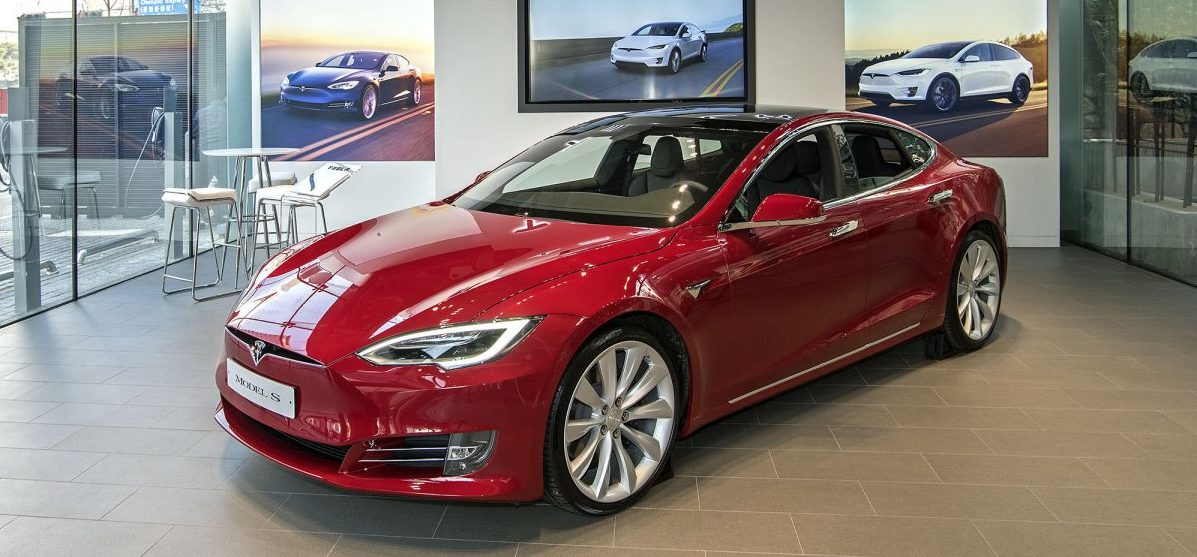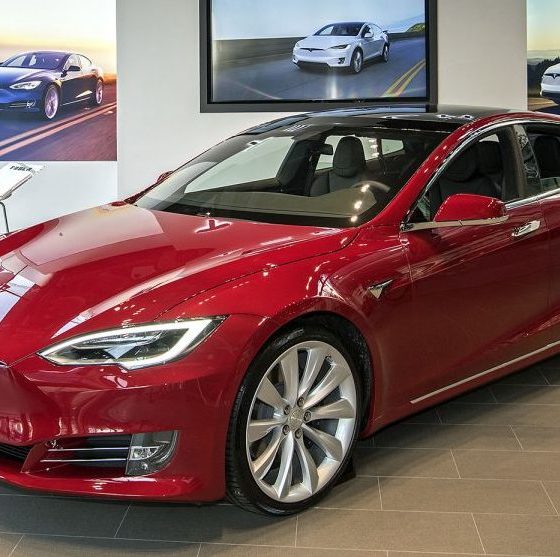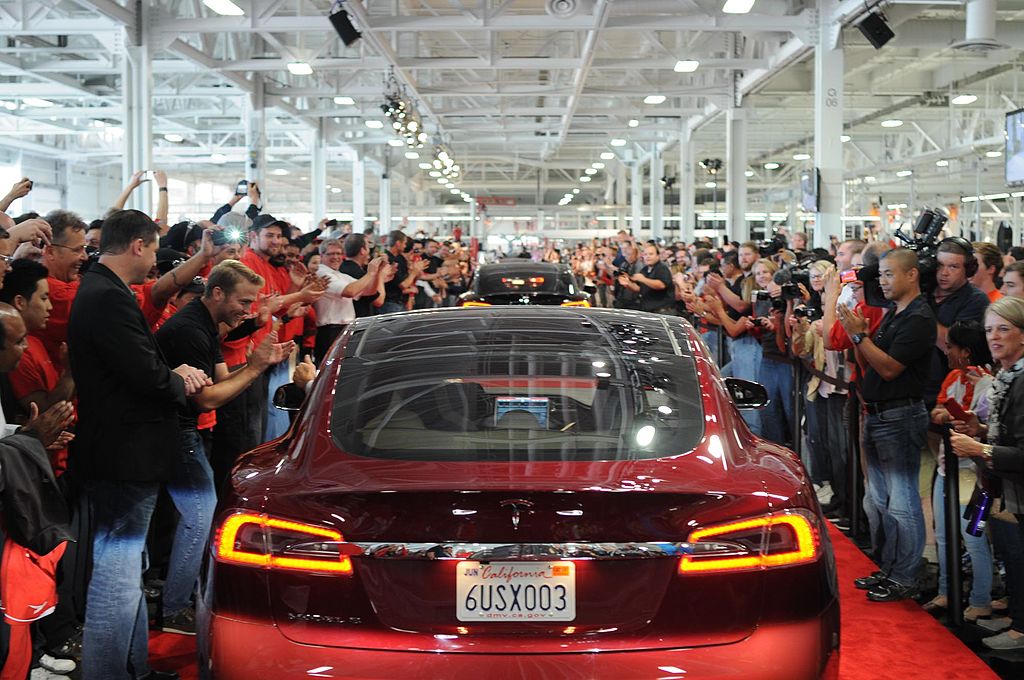

News
Tesla Model S hailed as fastest-selling 2nd hand electric car in the US
The Tesla Model S has been dubbed as the fastest-selling all-electric car in the United States’ second-hand car market from January to July this year. The full-sized premium sedan was given the distinction by automotive research firm iSeeCars.com, which aggregates second-hand auto listings across the country.
For its recent study, the auto research firm analyzed more than 4 million 1-3-year-old cars that were sold from January to July 2018. The firm noted in a report that overall, late-model vehicles usually take an average of 46.4 days before they are sold. iSeeCars.com CEO Phong Ly pointed out that cars which take longer to sell on the second-hand market usually signify that supply exceeds demand, while vehicles that are sold quickly usually connote that supply is lower than demand.
“It’s important to know how long vehicles stay on dealer lots because slower-moving cars can present negotiation opportunities for consumers. Cars that remain on market for longer than average indicate that supply is higher than demand, which could mean the pricing is too high or that the car isn’t as well-liked as its competitors,” Ly noted.
Among the United States’ available all-electric vehicles, the Tesla Model S stands as the fastest-selling used car from January to July. The all-electric car, which is designed by the company to be a vehicle that exceeds fossil fuel-powered competitors, spent an average of 32.4 days on used car dealer lots before getting sold. The iSeeCars.com CEO notes that such findings are primarily due to the Model S’ dominance in the premium all-electric car segment.
“The Model S is currently the only all-electric luxury car available, and its demand outstrips supply leading to scarcity in the used-car marketplace. Those who purchase a new model have to wait at least a month for delivery while there is no wait time for a used version,” Ly noted.
The Tesla Model S ranked as the second-fastest-selling used passenger car in the United States overall as well, directly behind the Toyota Prius C, an affordable hybrid vehicle that’s smaller than the full-sized Toyota Prius. The Prius C takes an average of 29.6 days before it is sold on second-hand dealer lots.
The findings of iSeeCars.com‘s study are in line with the results of another survey conducted by car-shopping platform Autolist.com last year. The results of Autolist.com‘s study concluded that used Tesla Model S sell 5% quicker than other luxury sedans from competing automakers such as the Audi A7, the Porsche Panamera, the BMW 6 Series, the Mercedes-Benz CLS, and even the Lexus LS 460. This was despite the average listing price of second-hand Model S being roughly 3% to 5% higher than comparable vehicles.

The number of the company’s electric cars on US roads is bound to increase, particularly since Tesla is now optimizing the production of the Model 3. With this, the second-hand market for the company’s electric cars would likely exhibit some growth. The impending rise in the number of Teslas on the road has been teased by Elon Musk in a letter to employees, where he noted that the company is “about to have the most amazing quarter in (its) history, building and delivering more than twice as many cars as (it) did last quarter.”
Considering that Tesla delivered a total of 40,740 vehicles and produced a total of 53,339 electric cars in Q2 2018, Elon Musk’s statement in his letter appears to be quite ambitious. That being said, Tesla board member Kimbal Musk noted during a recent segment on CNBC’s Closing Bell that this month would be pretty exciting for the company.
“This month is an exciting month for us. You know, it’s really gonna blow people’s minds how many Model 3s are gonna appear in America in just the next couple of weeks,” he said.
Watch Kimbal Musk’s discuss Elon Musk and the Model 3 in CNBC’s Closing Bell in the video below.

News
Tesla FSD fleet is nearing 7 billion total miles, including 2.5 billion city miles
As can be seen on Tesla’s official FSD webpage, vehicles equipped with the system have now navigated over 6.99 billion miles.

Tesla’s Full Self-Driving (Supervised) fleet is closing in on almost 7 billion total miles driven, as per data posted by the company on its official FSD webpage.
These figures hint at the massive scale of data fueling Tesla’s rapid FSD improvements, which have been quite notable as of late.
FSD mileage milestones
As can be seen on Tesla’s official FSD webpage, vehicles equipped with the system have now navigated over 6.99 billion miles. Tesla owner and avid FSD tester Whole Mars Catalog also shared a screenshot indicating that from the nearly 7 billion miles traveled by the FSD fleet, more than 2.5 billion miles were driven inside cities.
City miles are particularly valuable for complex urban scenarios like unprotected turns, pedestrian interactions, and traffic lights. This is also the difference-maker for FSD, as only complex solutions, such as Waymo’s self-driving taxis, operate similarly on inner-city streets. And even then, incidents such as the San Francisco blackouts have proven challenging for sensor-rich vehicles like Waymos.
Tesla’s data edge
Tesla has a number of advantages in the autonomous vehicle sector, one of which is the size of its fleet and the number of vehicles training FSD on real-world roads. Tesla’s nearly 7 billion FSD miles then allow the company to roll out updates that make its vehicles behave like they are being driven by experienced drivers, even if they are operating on their own.
So notable are Tesla’s improvements to FSD that NVIDIA Director of Robotics Jim Fan, after experiencing FSD v14, noted that the system is the first AI that passes what he described as a “Physical Turing Test.”
“Despite knowing exactly how robot learning works, I still find it magical watching the steering wheel turn by itself. First it feels surreal, next it becomes routine. Then, like the smartphone, taking it away actively hurts. This is how humanity gets rewired and glued to god-like technologies,” Fan wrote in a post on X.
News
Tesla starts showing how FSD will change lives in Europe
Local officials tested the system on narrow country roads and were impressed by FSD’s smooth, human-like driving, with some calling the service a game-changer for everyday life in areas that are far from urban centers.

Tesla has launched Europe’s first public shuttle service using Full Self-Driving (Supervised) in the rural Eifelkreis Bitburg-Prüm region of Germany, demonstrating how the technology can restore independence and mobility for people who struggle with limited transport options.
Local officials tested the system on narrow country roads and were impressed by FSD’s smooth, human-like driving, with some calling the service a game-changer for everyday life in areas that are far from urban centers.
Officials see real impact on rural residents
Arzfeld Mayor Johannes Kuhl and District Administrator Andreas Kruppert personally tested the Tesla shuttle service. This allowed them to see just how well FSD navigated winding lanes and rural roads confidently. Kruppert said, “Autonomous driving sounds like science fiction to many, but we simply see here that it works totally well in rural regions too.” Kuhl, for his part, also noted that FSD “feels like a very experienced driver.”
The pilot complements the area’s “Citizen Bus” program, which provides on-demand rides for elderly residents who can no longer drive themselves. Tesla Europe shared a video of a demonstration of the service, highlighting how FSD gives people their freedom back, even in places where public transport is not as prevalent.
What the Ministry for Economic Affairs and Transport says
Rhineland-Palatinate’s Minister Daniela Schmitt supported the project, praising the collaboration that made this “first of its kind in Europe” possible. As per the ministry, the rural rollout for the service shows FSD’s potential beyond major cities, and it delivers tangible benefits like grocery runs, doctor visits, and social connections for isolated residents.
“Reliable and flexible mobility is especially vital in rural areas. With the launch of a shuttle service using self-driving vehicles (FSD supervised) by Tesla in the Eifelkreis Bitburg-Prüm, an innovative pilot project is now getting underway that complements local community bus services. It is the first project of its kind in Europe.
“The result is a real gain for rural mobility: greater accessibility, more flexibility and tangible benefits for everyday life. A strong signal for innovation, cooperation and future-oriented mobility beyond urban centers,” the ministry wrote in a LinkedIn post.
News
Tesla China quietly posts Robotaxi-related job listing
Tesla China is currently seeking a Low Voltage Electrical Engineer to work on circuit board design for the company’s autonomous vehicles.

Tesla has posted a new job listing in Shanghai explicitly tied to its Robotaxi program, fueling speculation that the company is preparing to launch its dedicated autonomous ride-hailing service in China.
As noted in the listing, Tesla China is currently seeking a Low Voltage Electrical Engineer to work on circuit board design for the company’s autonomous vehicles.
Robotaxi-specific role
The listing, which was shared on social media platform X by industry watcher @tslaming, suggested that Tesla China is looking to fill the role urgently. The job listing itself specifically mentions that the person hired for the role will be working on the Low Voltage Hardware team, which would design the circuit boards that would serve as the nervous system of the Robotaxi.
Key tasks for the role, as indicated in the job listing, include collaboration with PCB layout, firmware, mechanical, program management, and validation teams, among other responsibilities. The role is based in Shanghai.
China Robotaxi launch
China represents a massive potential market for robotaxis, with its dense urban centers and supportive policies in select cities. Tesla has limited permission to roll out FSD in the country, though despite this, its vehicles have been hailed as among the best in the market when it comes to autonomous features. So far, at least, it appears that China supports Tesla’s FSD and Robotaxi rollout.
This was hinted at in November, when Tesla brought the Cybercab to the 8th China International Import Expo (CIIE) in Shanghai, marking the first time that the autonomous two-seater was brought to the Asia-Pacific region. The vehicle, despite not having a release date in China, received a significant amount of interest among the event’s attendees.








